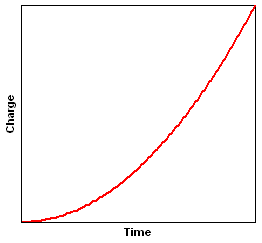Battle - Equipment
This page describes the types of equipment available in the
Battle simulation.
When you purchase an item of equipment, you specify your desired
values for each parameter on that equipment. The cost of the item
is calculated from a function of the equipment values - the
coefficients of this function are stored in the simulation
server's configuration xml file. The EquipmentDesigner tool can
be used to easily calculate the cost of your equipment selection.
Note that if the formula for the cost of some equipment produces
a result less than zero for your choice of parameters, the cost
is treated as if it were zero - ie you do not get a credit.
Engine
An engine is required so that the robot can move. Engines are
categorised by the following parameters:
-
The top speed, in metres per second. When the throttle
is set to 100%, the robot moves forward at this speed,
when the throttle is set to -100%, the robot moves backward
at this speed.
-
The turning speed, in degrees per second. The speed at
which the robot will turn from its current orientation to
the set desired orientation. A robot is able to turn without
moving forwards or backwards at the same time.
Sensor

A sensor is required so that the robot can sense other robots and
active munitions. The light blue outline shows the area which the
robot's sensor can sense within. Sensors are categorised by the
following parameters:
-
The range, in metres. The distance from the robot within which
other robots or munitions can be sensed.
-
The beam width, in degrees. The width of the area over which
the robot can sense other robots or munitions. The beam
extends 1/2 of this angle to each side of the direction the
sensor is facing. The maximum beam width is 270 degrees.
-
The turning speed, in degrees per second. The speed at
which the sensor will turn from its current orientation to
the set desired orientation.
Battery
A robot uses energy for actions such as firing its weapon. A
battery is required to store the robot's energy. Batteries are
categorised by the following parameters:
-
The capacity, in units of energy. The total amount of
energy which the battery can hold.
Turret
A turret is required for the robot to be able to indicate in what
direction its weapon will fire. Turrets are categorised by the
following parameters:
-
The movement range, in degrees. The range over which the turret
can move, 1/2 of this value to each side of the direction the
robot is facing. The maximum movement range is 270 degrees.
-
The turning speed, in degrees per second. The speed at
which the turret will turn from its current orientation to
the set desired orientation.
Weapon
A weapon is required to inflict damage upon other robots. Weapons are
categorised by the following parameters:
-
The charge time, in seconds. The time which the weapon takes
to charge to full capacity after it has been fired. The weapon
will charge automatically when not fully charged, unless the
robot has insufficient energy.
-
The energy usage, in energy units. The number of units of
energy required to charge the weapon to full capacity. While
the weapon is charging, energy will be consumed at a rate of
(energy usage) / (charge time) energy units per second.
-
The damage, in points. The number of points of damage which
a munition fired by this weapon will inflict if it hits another
robot, if the weapon was fired when it was fully charged.
A weapon which is only partially charged will inflict an
amount of damage proportional to how much it was charged
when it was fired (ie a weapon which does 4 points
of damage when fully charged will do 2 points of damage if
50% charged).
-
The munition speed, in metres per second. The speed at which
the munitions travel, relative to the robot's speed at the time of
firing.

Note that the weapon charging follows a quadratic relationship, so
for example after 50% of the charge time has elapsed, the weapon is
only 25% charged. This means it is more energy efficient (ie more
damage inflicted per unit of energy consumed) to wait until the
weapon is fully charged before firing. However, it is still
possible to fire the weapon before it is fully charged if desired,
provided it is at least 1% charged.
Solar Panel
A solar panel is required to collect energy, to replace what
has been consumed by actions such as charging the weapon.
Solar panels are categorised by the following parameters:
-
The efficiency, in energy units per second.
The number of units of energy which the solar panel
can collect per second (when the battery is not at
full capacity).

